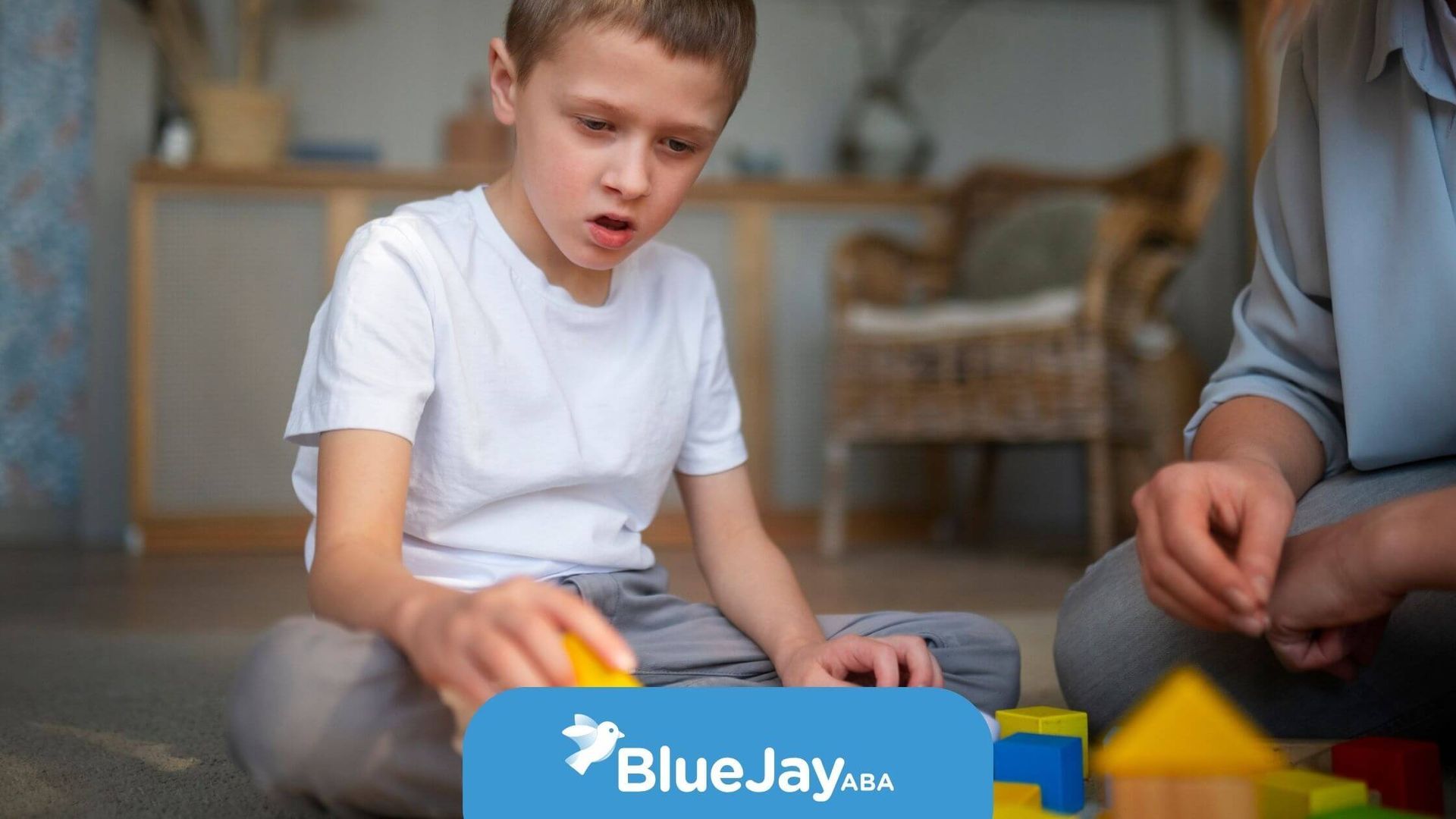Effective ABA Strategies to Tame Tantrums and Improve Emotional Regulation
Key Highlights
- ABA therapy helps manage tantrums using positive reinforcement and tailored strategies.
- Identifying replacement behaviors helps children manage emotional outbursts.
- Conducting a Functional Behavior Assessment (FBA) uncovers the reasons behind tantrums.
- Proactive strategies like structured routines and visual schedules can prevent tantrums.
- Understanding sensory sensitivities and triggers can minimize challenging behaviors.
- Consistent application of ABA methods encourages long-term progress.
Tantrums can be overwhelming for parents and caregivers of children with autism, but ABA therapy offers clear, effective strategies to manage these behaviors.
Children on the autism spectrum may experience tantrums more often due to difficulties with communication or sensory overload. When a child struggles to express themselves or becomes overwhelmed, it can lead to emotional outbursts.
Tantrums are a common challenge for children on the autism spectrum, and they can be especially overwhelming for parents. ABA therapy offers practical, research-backed methods for managing these difficult moments.
With a bit of preparation and the right strategies, tantrums can become more manageable, and in many cases, can be significantly reduced.
I worked closely with a family whose child, Luke, would often have meltdowns in social settings due to sensory overload. By using home-based ABA techniques like sensory-friendly spaces and structured routines, we were able to reduce the frequency of Luke’s outbursts, and his parents felt more confident handling challenging situations.
Understanding Tantrums in ABA Therapy
What is a Tantrum?
Tantrums are a common behavior in children with autism, and they often include actions like kicking, crying, or yelling. These behaviors typically happen when a child feels upset, frustrated, or unable to express their needs.
ABA therapy focuses on understanding the root cause of these outbursts and helps caregivers intervene effectively.
How ABA Helps Manage Tantrums
ABA therapy is centered on understanding the triggers and patterns behind tantrums. By identifying what happens before, during, and after a tantrum, caregivers can pinpoint what is causing the behavior.
With this understanding, they can apply specific interventions that address the behavior and teach alternative ways to express emotions or needs.
Recognizing the Difference Between Tantrums and Meltdowns
Understanding Meltdowns
It’s important to distinguish between tantrums and meltdowns, as each requires different approaches. A meltdown occurs when a child becomes overwhelmed, often due to sensory overload or emotional distress.
Unlike a tantrum, a meltdown isn’t intentional and is usually uncontrollable. A child may become unresponsive or exhibit repetitive behaviors during a meltdown.
Identifying a Tantrum
On the other hand, a tantrum is typically a child’s attempt to gain attention, control, or access something they want. Tantrums are more predictable and can be addressed using strategies like positive reinforcement, which rewards desirable behaviors.
Knowing the difference between these two types of behavior helps caregivers respond in a way that is most appropriate for the situation.
Common Triggers for Tantrums in Children with Autism
Identifying Triggers
Recognizing what triggers tantrums in autistic children is a key step in preventing them. Some common triggers include:
- Sensory Sensitivities: Overwhelming sounds, lights, or busy spaces can cause sensory overload.
- Transitions: Moving from one activity to another, especially stopping a favorite task, can trigger frustration.
- New Environments: Going to a new place can create anxiety or discomfort.
- Challenging Tasks: Tasks that are too difficult or confusing can lead to frustration.
By identifying these triggers, caregivers can adjust the environment or routines to help reduce the likelihood of tantrums and better manage the child’s emotional responses.
Core Principles of ABA for Managing Tantrums
Key ABA Strategies
ABA therapy is based on several core principles that can help manage tantrums effectively:
- Behavior Analysis: Understanding the child’s behavior, including what happens before, during, and after a tantrum.
- Positive Reinforcement: Rewarding good behavior to encourage its repetition.
- Replacement Behaviors: Teaching children to use more appropriate behaviors to meet their needs instead of resorting to tantrums.
These strategies focus on helping children build emotional regulation skills and communication abilities. With ABA therapy, caregivers can create an environment that supports positive behavior and emotional growth.
The Importance of Functional Behavior Assessment
What is a Functional Behavior Assessment?
A Functional Behavior Assessment (FBA) is a key part of ABA therapy. It’s a process used to identify the reasons behind a child’s challenging behaviors, like tantrums.
By examining what happens before, during, and after the behavior, caregivers can gain insights into the underlying causes and create more effective behavior plans.
Here’s a quick breakdown of the key components of an FBA:
| Component | Purpose |
|---|---|
| Antecedents | Identifying what happens just before the behavior occurs. |
| Problem Behavior | Analyzing the specific behaviors that need to be addressed. |
| Consequences | Looking at what happens after the behavior and how people respond. |
| Functional Analysis | Finding patterns and determining the purpose of the behavior. |
The FBA process helps caregivers understand the root causes of tantrums, allowing them to create personalized interventions that target specific needs.
Identifying the Function of Tantrum Behaviors
Why Tantrums Happen
Every tantrum has a reason behind it. Identifying the cause is crucial for applying the right ABA strategies. Common functions of tantrums include:
- Seeking Attention: The child may be trying to get attention from others.
- Escape or Avoidance: The child might be trying to avoid a difficult or uncomfortable situation.
- Access to Preferred Activities or Items: The child could be trying to get something they want.
Once the function of the tantrum is identified, ABA therapy can teach the child alternative ways to get their needs met. For example, a child who tantrums to gain access to a toy could learn to use a visual aid or sign language to make their request.
Proactive Strategies to Prevent Tantrums
Preventing Tantrums Before They Start
To reduce tantrums, caregivers should focus on proactive strategies that can be built into the child’s routine. These include:
- Structured Routines: Consistent daily routines help children feel more secure and reduce anxiety during transitions.
- Environmental Adjustments: Making the environment calmer and more predictable can help prevent sensory overload.
- Teaching Coping Skills: Help children develop tools, such as deep breathing or using visual cues, to manage their emotions before they escalate.
By setting up these proactive strategies, caregivers can prevent many tantrums from occurring and provide children with better tools for emotional regulation.
Structuring the Environment for Success
Environmental Adjustments
Creating the right environment is crucial in reducing tantrums. Some helpful adjustments include:
- Eliminate Distractions: Remove items that could overwhelm or distract the child, helping them focus better.
- Use Preferred Activities as Rewards: Incorporating activities the child enjoys as part of a reward system encourages positive behavior.
- Implement Visual Schedules: These schedules help children understand what to expect next, making transitions easier.
By making these small adjustments, caregivers can create an environment that minimizes the chance of tantrums and supports the child’s emotional well-being.
Using Visual Supports and Predictable Routines
The Power of Visual Supports
Visual supports are an effective tool for helping children with autism manage transitions and daily activities. Tools like picture cards, charts, and visual timers help children understand what is coming next, reducing anxiety and frustration.
The Importance of Routine
Having a predictable routine helps children feel secure and reduces the chance of tantrums.
For example, giving children a five-minute warning before transitioning to a new activity helps prepare them for the change. Using priming—telling the child in advance about upcoming transitions—can also ease the process.
Conclusion
In conclusion, managing tantrums in children with autism through ABA therapy involves understanding the difference between tantrums and meltdowns and identifying the triggers that lead to these behaviors.
Using proactive strategies like creating a structured environment, implementing visual supports, and conducting Functional Behavior Assessments can help reduce the frequency of tantrums. Consistency in applying these strategies is key to achieving long-term success.
If you’re ready to take the next step in supporting your child’s emotional development, Blue Jay ABA is here to help.
Our team of certified ABA therapists in North Carolina provides personalized, evidence-based strategies to manage challenging behaviors like tantrums. With our expert guidance, we can help you create a positive, structured environment that fosters growth and learning.
Contact Blue Jay ABA today to schedule a consultation and start your child’s journey toward emotional regulation and long-term success!
Frequently Asked Questions
What is the first step in managing tantrums using ABA?
The first step is conducting a Functional Behavior Assessment (FBA). This helps identify the causes and triggers behind the tantrums, allowing caregivers to develop a tailored behavior plan.
Can parents use ABA strategies at home for tantrums?
Yes, parents can apply ABA strategies at home, including offering choices, using positive reinforcement, and maintaining consistent routines. Consistency is essential for these strategies to be effective.
How does ABA address communication during tantrums?
ABA therapy teaches children alternative ways to communicate, such as using sign language or picture cards, which helps reduce tantrums caused by frustration over not being able to express needs.
Sources:
- https://www.understood.org/en/articles/functional-behavioral-assessment-what-it-is-and-how-it-works
- https://www.autism.org.uk/advice-and-guidance/topics/behaviour/meltdowns/all-audiences
- https://www.autismparentingmagazine.com/autism-meltdowns/
- https://www.leicspart.nhs.uk/autism-space/health-and-lifestyle/meltdowns-and-shutdowns/
- https://www.cdc.gov/ncbddd/actearly/autism/curriculum/documents/early-warning-signs-autism_508.pdf
Related Posts






